In recent years, the contact grill market has witnessed a surge in popularity, particularly in North America and Europe. As consumers increasingly seek healthier cooking options and convenient appliances, the demand for contact grills has skyrocketed. This brief overview delves into the key trends shaping the contact grill industry, highlighting the factors driving growth, the strategies employed by leading vendors, and the challenges and opportunities that lie ahead. With a focus on consumer preferences and technological innovations, this analysis aims to provide a comprehensive understanding of the current state of the contact grill market in the USA and Europe.
Introduction to Contact Grill Market Dynamics in the USA and Europe
The contact grill market in the USA and Europe has been witnessing a steady evolution, driven by consumer preferences for convenience, health, and innovation. These regions have distinct market dynamics that influence the sales and growth of contact grills.
In the United States, contact grills have gained popularity due to their ability to provide a seared texture and smoky flavor without the need for oil. As health consciousness rises, consumers are gravitating towards cooking methods that minimize the addition of fats, making contact grills an appealing option. The market is segmented by product types, such as flat top, round top, and infrared contact grills, each catering to different consumer needs and preferences.
On the other side of the Atlantic, Europe has a slightly different landscape. The market is characterized by a variety of contact grill brands and models, each with its unique selling points. The European consumer is often more environmentally conscious, leading to a preference for energy-efficient appliances. Additionally, the culinary diversity in Europe means that contact grills must be versatile enough to cater to various cooking techniques and regional tastes.
One of the key factors driving the contact grill market in both regions is the demand for convenience. With busy lifestyles, consumers are looking for quick and easy meal preparation solutions. Contact grills offer a time-efficient alternative to traditional cooking methods, allowing users to cook a variety of foods, from burgers and steaks to vegetables and fish, all on a single appliance.
The competitive landscape is shaped by well-established players, as well as emerging brands that are leveraging technology to differentiate their products. In the USA, well-known manufacturers like George Foreman and Hamilton Beach have been at the forefront, while in Europe, brands like Tefal and Russell Hobbs have a strong presence.
Another significant factor is the trend towards healthier eating habits. Contact grills, which can be used to cook with less oil than traditional grilling methods, align with this trend. The health benefits, coupled with the ability to achieve a desirable crust without the risk of flare-ups, have made contact grills a go-to choice for many health-conscious consumers.
In terms of innovation, the contact grill market is seeing advancements in materials, design, and features. Non-stick coatings are becoming more durable, and some models now come with digital temperature controls and adjustable heat settings, providing users with greater precision. Some brands are even incorporating smart technology, allowing users to monitor and control their grills via smartphone apps.
When it comes to marketing and distribution, contact grill vendors are using a mix of traditional and digital channels to reach their target audience. Online sales have been particularly impactful, with many consumers turning to e-commerce platforms for their shopping needs. Additionally, brick-and-mortar retailers continue to play a role, with contact grills often found in kitchen stores and department stores.
Despite the growth, the contact grill market in both the USA and Europe faces challenges. One of the biggest hurdles is competition from other cooking appliances, such as outdoor grills and indoor countertop grills. To stand out, vendors must continuously innovate and offer unique selling propositions.
Furthermore, environmental concerns are prompting manufacturers to explore sustainable materials and more energy-efficient designs. As consumers become more aware of their carbon footprint, these factors could influence purchasing decisions in the future.
In conclusion, the contact grill market in the USA and Europe is dynamic, with a focus on convenience, health, and innovation. As consumer preferences evolve and new technologies emerge, the market is poised for continued growth, with vendors needing to stay agile and responsive to changing trends.
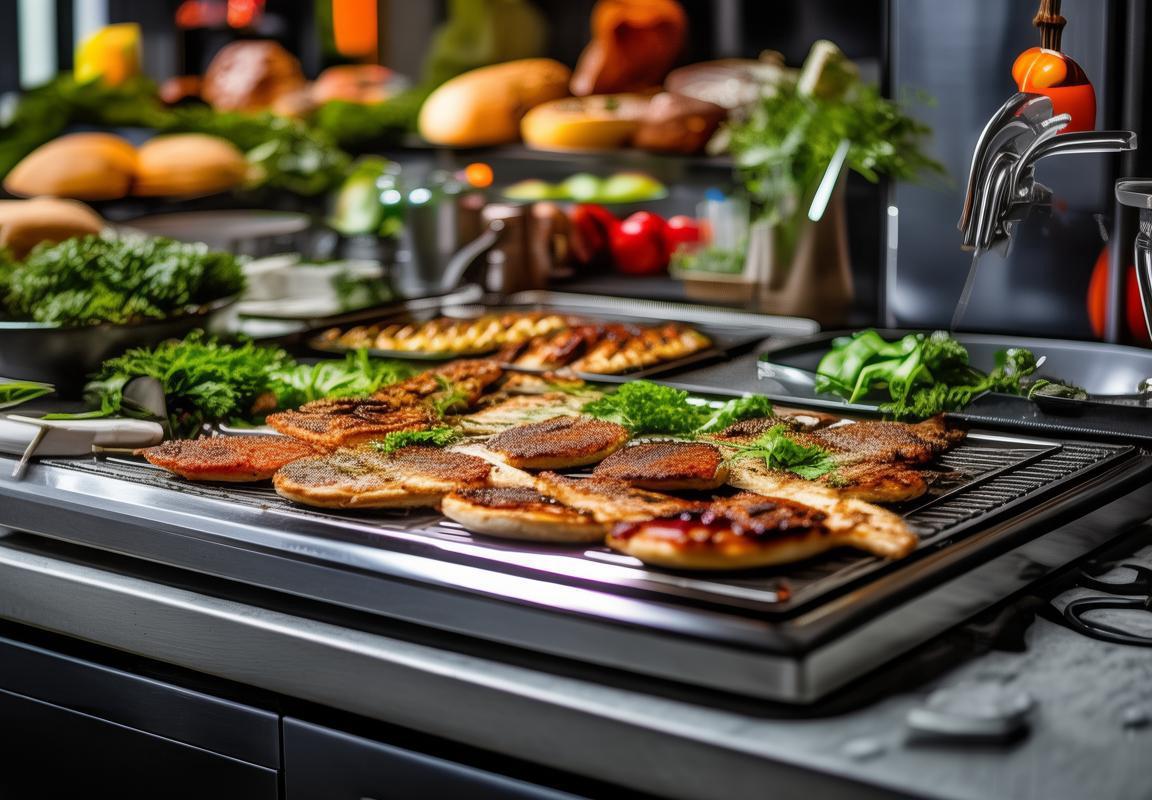
Understanding Contact Grills: A Quick Overview
Contact grills, often affectionately referred to as “flat grills” or “singeless grills,” have become a staple in many kitchens around the world. These appliances are designed to cook food by pressing it between two flat surfaces, which are typically heated to a high temperature. Here’s a closer look at what makes contact grills unique and how they work.
The design of a contact grill is quite straightforward. It consists of a top and bottom plate, both of which are heated to cook the food. The plates are often made of cast iron or stainless steel due to their durability and ability to retain heat. The cooking surface is smooth, allowing for even heat distribution and preventing food from sticking.
One of the standout features of contact grills is their ability to create a sear on the food, similar to what you’d get from a traditional grill. This sear is achieved by the high heat pressing down on the food, which also helps to lock in flavors and juices. The process is much faster than traditional grilling, as the heat is concentrated and direct.
These grills are versatile and can be used to cook a variety of foods, from meats and vegetables to sandwiches and even pizzas. The even cooking surface ensures that the food is cooked thoroughly without overcooking the edges. This is particularly beneficial for those who want to minimize the risk of burning or charring their food.
One of the key advantages of contact grills is their ease of use. They are generally simple to clean, as the non-stick surfaces make it easy to remove food particles. Additionally, many models come with removable plates for easy cleaning and storage.
Another important aspect of contact grills is their safety features. Since the cooking surface is flat and the heat is contained, there’s less risk of flare-ups or hot grease splatters. This makes them a great choice for those with small kitchens or limited counter space, as they don’t require a lot of ventilation.
Contact grills come in various sizes and configurations to suit different needs. Some models are countertop units that can be easily moved from one place to another, while others are built-in units that become a permanent fixture in the kitchen. There are also portable contact grills, perfect for tailgating or camping trips.
In terms of cooking techniques, contact grills can simulate the cooking experience of a grill, a pan, or even a sandwich press. The flat surfaces can be used to grill steaks, burgers, and chicken, while the top plate can be flipped to cook items like sandwiches and pancakes. Some models even have adjustable heat settings, allowing users to control the cooking temperature according to their preference.
One of the more innovative features found in some contact grills is the ability to cook at different temperatures on each plate. This dual-temperature capability allows for a variety of cooking methods, such as searing the bottom of a steak while keeping the top rare.
When it comes to maintenance, contact grills are generally low-maintenance. They require regular cleaning to ensure the non-stick surfaces remain effective. This involves wiping down the plates after each use and occasionally soaking them in warm, soapy water if necessary. Some models come with self-cleaning features that use steam to loosen and remove food residue.
Despite their many benefits, contact grills are not without their drawbacks. One common issue is the risk of burning food if the heat is too high or if the grill is left unattended. It’s important to use the appliance according to the manufacturer’s instructions and to keep an eye on the cooking process.
Another consideration is the size of the cooking surface. While some models offer a generous cooking area, others may be more compact, which could limit the amount of food that can be cooked at once. This is something to keep in mind, especially for those who plan to cook for a large group or frequently prepare large cuts of meat.
In conclusion, contact grills are a convenient and versatile cooking appliance that can enhance the flavor and texture of a wide range of foods. Their ability to create a sear, lock in flavors, and cook food evenly makes them a popular choice for both casual cooks and culinary enthusiasts. Whether you’re looking to add a touch of professional flair to your home cooking or simply want a quick and easy way to prepare a meal, a contact grill is a valuable addition to any kitchen.
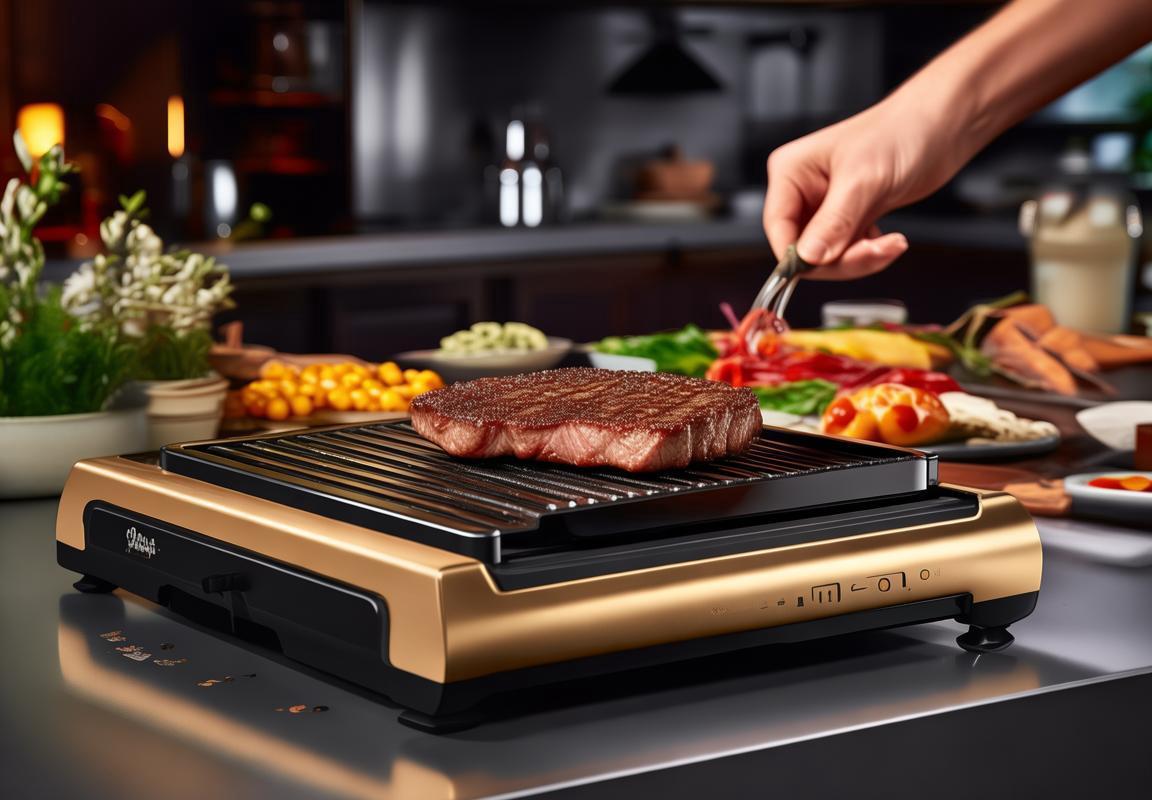
Market Overview: Current State of Contact Grill Sales in North America and Europe
The contact grill market in North America and Europe has seen significant growth, driven by a shift towards healthier cooking methods and the increasing popularity of outdoor cooking. Here’s a snapshot of the current state of contact grill sales in these regions.
-
Growing Demand for Healthy Cooking OptionsIn both North America and Europe, there’s a notable trend towards healthier eating habits. Contact grills, which offer a healthier alternative to traditional grilling methods, have capitalized on this demand. These grills provide a way to cook food with less oil, resulting in lower fat content and healthier meals.
-
Rising Popularity of Outdoor CookingAs people look for more engaging ways to spend time with family and friends, outdoor cooking has surged in popularity. Contact grills have become a staple in many households, especially during summer months, as they offer a convenient and efficient way to prepare a variety of foods outdoors.
-
Market Segmentation by Product TypeThe contact grill market is segmented into different types, including countertop, portable, and built-in models. Countertop grills are the most common, offering versatility and ease of use. Portable grills are gaining traction, particularly among those who enjoy camping or tailgating. Built-in grills, often found in outdoor kitchens, are becoming more popular in upscale homes.
-
Sales Growth in Key MarketsIn North America, the United States is the largest market for contact grills, with sales consistently increasing year over year. The rise in single-family homes and the trend towards home entertainment have contributed to this growth. In Europe, countries like Germany, the UK, and France are leading the charge, with a strong consumer base that values the convenience and quality that contact grills offer.
-
Competition and Market SaturationThe contact grill market is highly competitive, with numerous brands and models available. This competition has led to market saturation, with consumers having a wide range of options to choose from. Brands are constantly innovating to differentiate themselves, whether through design, features, or price points.
-
Price Sensitivity and Value for MoneyConsumers in both North America and Europe are price-sensitive when it comes to contact grills. However, they are also willing to invest in a quality product that offers value for money. This balance has influenced the pricing strategies of vendors, with many offering budget-friendly models alongside premium options.
-
E-commerce and Online SalesThe rise of e-commerce has had a significant impact on the contact grill market. Online sales platforms have made it easier for consumers to research and purchase grills, often at competitive prices. Vendors are increasingly focusing on their online presence, ensuring their products are readily available and well-represented online.
-
Technological AdvancementsContact grill manufacturers are continuously introducing new features and technologies to improve user experience. From non-stick coatings to adjustable temperature controls, these advancements are making contact grills more user-friendly and versatile. Smart grills that can be controlled via mobile apps are also gaining attention among tech-savvy consumers.
-
Marketing Strategies and BrandingMarketing and branding play a crucial role in the contact grill market. Vendors use various strategies to promote their products, including influencer partnerships, social media campaigns, and outdoor cooking events. Brands that effectively communicate the benefits of their grills are more likely to capture consumer interest and loyalty.
-
Sustainability and Eco-Friendly OptionsAs environmental concerns grow, more consumers are seeking eco-friendly products. Some contact grill vendors are responding to this demand by offering grills made from sustainable materials and with energy-efficient designs. This focus on sustainability is expected to become a more significant factor in the market’s future development.
-
Outlook for the Contact Grill MarketLooking ahead, the contact grill market is poised for continued growth, driven by the ongoing popularity of outdoor cooking and the health-conscious consumer trend. As technology evolves and consumer preferences shift, the market is likely to see further innovation and product development. Vendors that can adapt to these changes and offer quality products will be well-positioned to capture the market’s momentum.
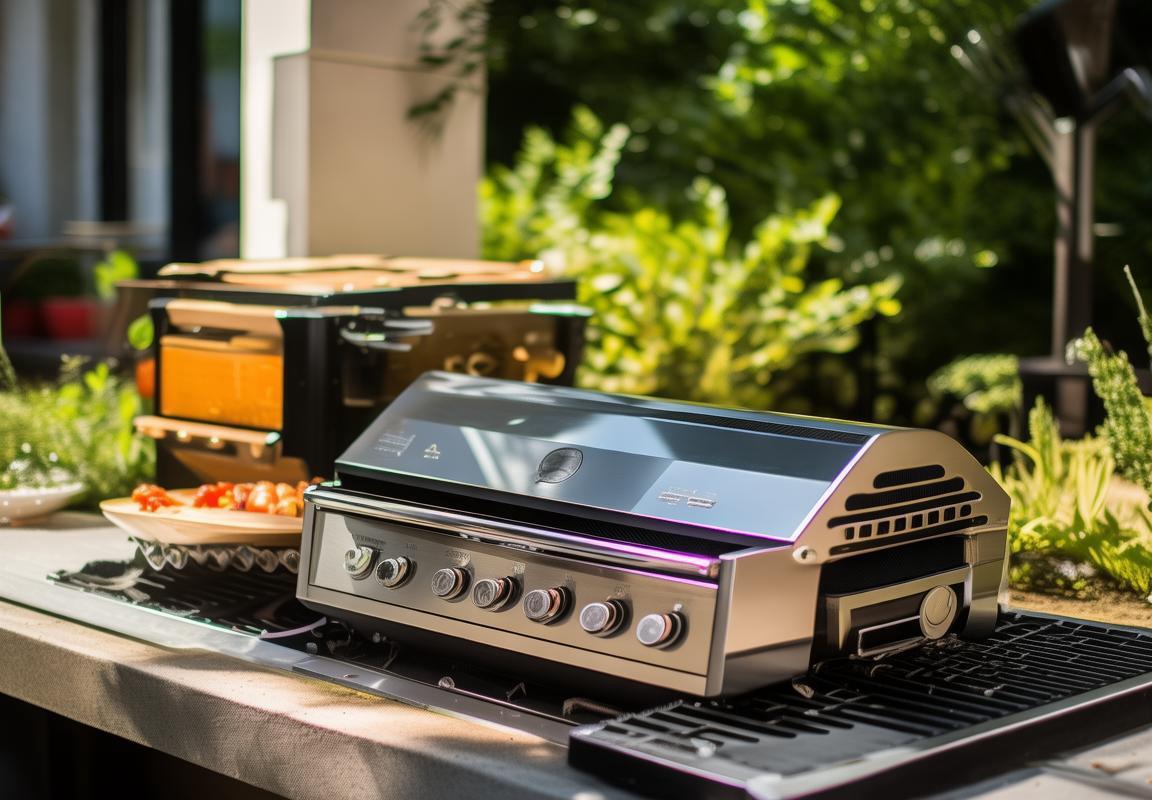
Key Players: A Look at Top Contact Grill Vendors
In the competitive landscape of the contact grill market, several key players have emerged as leaders, each bringing their unique offerings and innovations to the forefront. Here’s a glimpse into the profiles of some of the top contact grill vendors:
-
George Foreman: A household name in the grilling world, George Foreman has been a dominant force in the contact grill market. Known for their sleek design and even heat distribution, their products have become a staple in many kitchens. The brand’s commitment to healthy cooking, with their lean grilling method, has made them a favorite among health-conscious consumers.
-
Hamilton Beach: This brand has expanded its kitchen appliance line to include contact grills that cater to both casual grillers and those looking for a more efficient cooking option. Hamilton Beach’s contact grills are often praised for their ease of use and affordability, making them a go-to for budget-conscious shoppers.
-
Breville: Breville has made a name for itself by blending high-quality materials with innovative technology. Their contact grills are known for their precision cooking and advanced features like adjustable heat settings and non-stick surfaces. Breville’s focus on premium appliances has positioned them as a top choice for consumers seeking a high-end grilling experience.
-
Cuisinart: As a well-established brand in the kitchen appliance industry, Cuisinart offers a range of contact grills that cater to various cooking needs. Their grills are often equipped with multiple cooking functions, including grill, panini press, and even a broil option. Cuisinart’s reputation for durability and performance has helped them maintain a strong presence in the market.
-
Black & Decker: Recognized for their reliable and affordable products, Black & Decker has made a mark in the contact grill segment. Their contact grills are designed for quick and easy cooking, with features like removable cooking plates for easy cleaning. Black & Decker’s commitment to providing value has helped them capture a significant share of the market.
-
Sunbeam: Sunbeam’s contact grills are known for their simplicity and functionality. The brand offers a variety of models, each with its own set of features that cater to different cooking preferences. Sunbeam’s focus on providing practical solutions at a reasonable price has made them a popular choice among consumers.
-
Instant Pot: Although primarily known for their multi-functional pressure cookers, Instant Pot has ventured into the contact grill market with their LUX line. These grills combine the convenience of a contact grill with the versatility of a pressure cooker, offering users the ability to sear, sauté, and steam all in one appliance.
-
Oster: Oster has been a trusted name in kitchen appliances for decades, and their contact grills are no exception. Known for their quality and affordability, Oster’s grills often come with features like adjustable heat controls and non-stick surfaces, making them a reliable choice for everyday cooking.
-
Breville Barista Express: While not a traditional contact grill, Breville’s Barista Express is a unique offering that combines a contact grill with a milk frother for coffee enthusiasts. This innovative product allows users to cook and brew their morning coffee with ease.
-
Cuisinelle: Cuisinelle offers a range of contact grills that are designed with European aesthetics in mind. Their grills are known for their stylish designs and efficient cooking capabilities, appealing to consumers who value both form and function.
These top contact grill vendors have established themselves as leaders in the market through a combination of quality products, innovative features, and a focus on customer satisfaction. Whether it’s for the convenience of a quick meal or the joy of outdoor grilling, these brands continue to meet the diverse needs of consumers across North America and Europe.
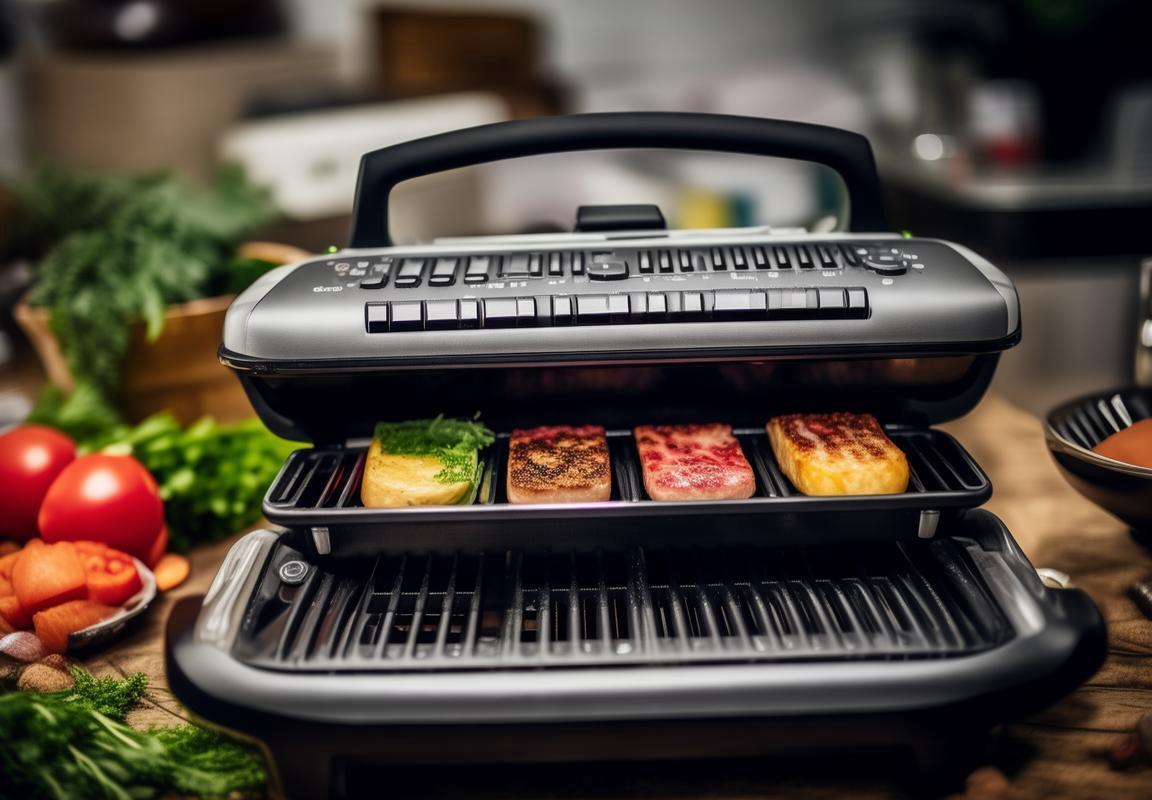
Market Trends: What’s Shaping the Contact Grill Industry?
In recent years, the contact grill industry has experienced a surge in popularity, driven by a combination of culinary trends, technological advancements, and health-conscious consumer preferences. This segment of the cooking appliances market is not only evolving but also shaping new trends that are likely to have a lasting impact. Here’s an exploration of the key trends currently influencing the contact grill industry:
Health and Wellness FocusConsumers are increasingly seeking cooking methods that offer healthier alternatives to traditional grilling. Contact grills, with their ability to cook food with less oil and fat, align perfectly with this health trend. As a result, vendors are emphasizing the low-fat, low-calorie benefits of contact grills in their marketing strategies.
Smart Technology IntegrationThe integration of smart technology into contact grills has become a significant trend. Many high-end models now come equipped with features like temperature control, preset cooking programs, and even Wi-Fi connectivity, allowing users to monitor and adjust their cooking from their smartphones. This technological advancement is appealing to tech-savvy consumers and those who value convenience.
Sustainability and Eco-Friendly DesignAs environmental concerns grow, manufacturers are focusing on sustainability in their product design. This includes the use of recyclable materials, energy-efficient components, and designs that promote longer product life. Eco-friendly marketing initiatives and certifications are also becoming more prevalent, influencing consumer purchasing decisions.
Portability and Compact SizeThe need for compact, easy-to-store kitchen appliances is on the rise, especially in urban settings where space is at a premium. Contact grills that are designed to be lightweight and portable are becoming more popular, offering consumers the flexibility to cook outdoors or in smaller kitchen spaces.
Gourmet Cooking CapabilitiesWith the rise of foodies and the gourmet culinary scene, contact grills are now not just for quick burgers and sandwiches. Modern contact grills can achieve a range of cooking textures, from seared steaks to perfectly crisp pancakes. This versatility is attracting enthusiasts who appreciate the ability to replicate high-end restaurant cooking at home.
Globalization and Cultural FusionAs travel becomes more accessible, people are exposed to a wider variety of international cuisines. Contact grill vendors are responding by offering models that can help recreate these diverse flavors at home. From Japanese-style teppanyaki to Italian-style grilling, the contact grill market is embracing cultural fusion.
E-commerce and Direct-to-Consumer SalesThe growth of online retail has had a profound impact on the contact grill industry. Many brands are now selling directly to consumers through e-commerce platforms, which allows for a more direct relationship with customers. This direct sales approach often comes with attractive pricing and additional incentives, such as free shipping or extended warranties.
Marketing and Influencer PartnershipsMarketing strategies have evolved to include influencer partnerships and social media campaigns. Influencers, chefs, and cooking enthusiasts are often seen showcasing contact grill products in their cooking content, providing authenticity and credibility to the brands they endorse.
Customization and PersonalizationConsumers are looking for products that cater to their specific needs and preferences. Contact grill vendors are responding by offering a variety of customizable options, such as interchangeable grill plates, different types of heat settings, and even personalized engraving on the units themselves.
Focus on Functionality and User ExperienceInnovation is not just about new features; it’s also about how those features enhance the user experience. Contact grill manufacturers are placing a strong emphasis on intuitive design, ease of use, and user safety. This includes features like non-slip bases, easy-to-clean surfaces, and clear temperature displays.
Innovation in Material ScienceAdvances in material science have led to the development of new materials for contact grill manufacturing. These materials offer improved heat distribution, durability, and non-stick properties. The use of advanced materials is becoming a key differentiator for brands looking to stand out in a competitive market.
As the contact grill industry continues to evolve, these trends will likely play a significant role in shaping the future of the market. From health-conscious cooking to technological innovation, the contact grill is becoming a versatile and indispensable kitchen appliance for many homes around the world.
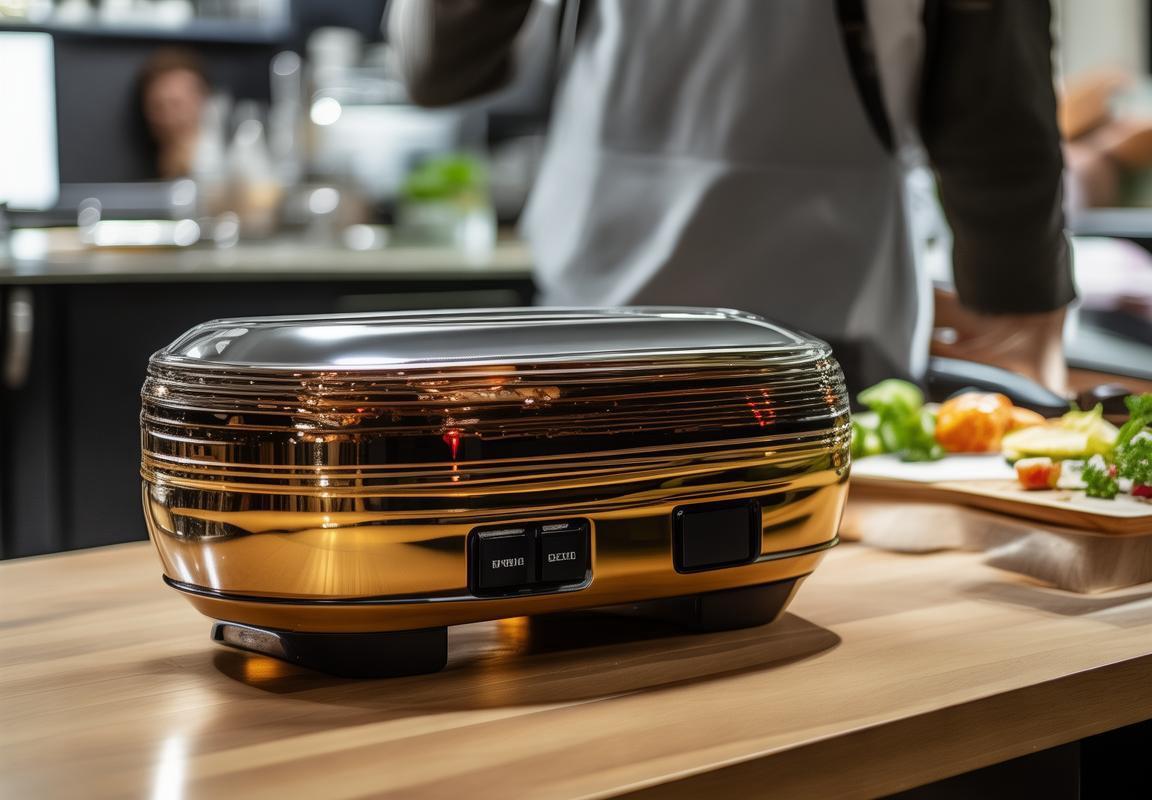
Consumer Preferences: Drivers of Growth in the Contact Grill Market
Consumers today are seeking convenience and efficiency in their cooking methods, and the contact grill market has seen a surge in popularity as a result. Several key factors are driving this growth, reflecting the evolving preferences of the modern consumer.
Grill enthusiasts and health-conscious individuals alike are drawn to the contact grill’s ability to cook food with minimal oil, offering a healthier alternative to traditional grilling methods. The low-fat cooking trend has been a significant driver, as consumers look for ways to reduce their intake of unhealthy fats and calories.
The rise of smart appliances and the integration of technology into kitchen gadgets has also played a crucial role. Contact grill vendors have responded by offering models with features like temperature control, timers, and pre-programmed settings that cater to the busy lifestyles of today’s consumers. This level of convenience and precision appeals to those who value ease of use and the ability to achieve consistent results without extensive cooking knowledge.
Another driving force behind the growth of the contact grill market is the preference for outdoor cooking experiences that can be replicated indoors. As people seek to enjoy the flavors of grilling year-round, regardless of weather conditions, contact grills provide a practical solution. They allow consumers to savor the smoky, charred flavors of grilled meats and vegetables in the comfort of their own homes, without the need for an outdoor grill.
Portability is a significant factor for many consumers. Compact and lightweight contact grills can easily be stored in small kitchens or taken on camping trips, picnics, or tailgating events. This flexibility in usage is appealing to those who are always on the move or have limited space for cooking equipment.
The trend towards single-serve and portion-controlled meals has also bolstered the contact grill market. With the increasing popularity of meal prep and individual servings, contact grills offer a quick and easy way to cook for one or two people, reducing waste and catering to the growing segment of solo diners and small households.
Health and wellness are at the forefront of consumer minds, and contact grills fit into this narrative by providing a means to cook with fewer additives and preservatives. The ability to control the cooking process and the ingredients used adds to the perception of a healthier lifestyle, which is a major driver of purchasing decisions.
The desire for variety in cooking techniques is another key preference. Contact grills can sear, grill, and even bake, offering a multi-functional cooking experience that can satisfy a wide range of culinary preferences. This versatility means that consumers can explore different cooking styles without having to invest in multiple appliances.
The rise of gourmet cooking at home has also influenced consumer preferences. With the increasing availability of high-quality cuts of meat and specialty ingredients, contact grills allow home chefs to experiment with marinades, spices, and cooking times to create restaurant-quality dishes. This trend has sparked a newfound appreciation for the contact grill as a tool for culinary creativity.
Lastly, the influence of social media and celebrity chefs cannot be overlooked. As these platforms showcase the ease and appeal of contact grills in preparing delicious meals, they serve as a catalyst for consumer interest and demand. The ability to share and replicate these recipes has made contact grills a must-have for aspiring chefs and cooking enthusiasts.
In conclusion, the growth of the contact grill market is driven by a confluence of factors, including health and wellness trends, technological advancements, the desire for convenience, and the increasing importance of culinary experiences. As these preferences continue to evolve, contact grill vendors are well-positioned to meet the needs of consumers seeking efficient, healthy, and versatile cooking solutions.
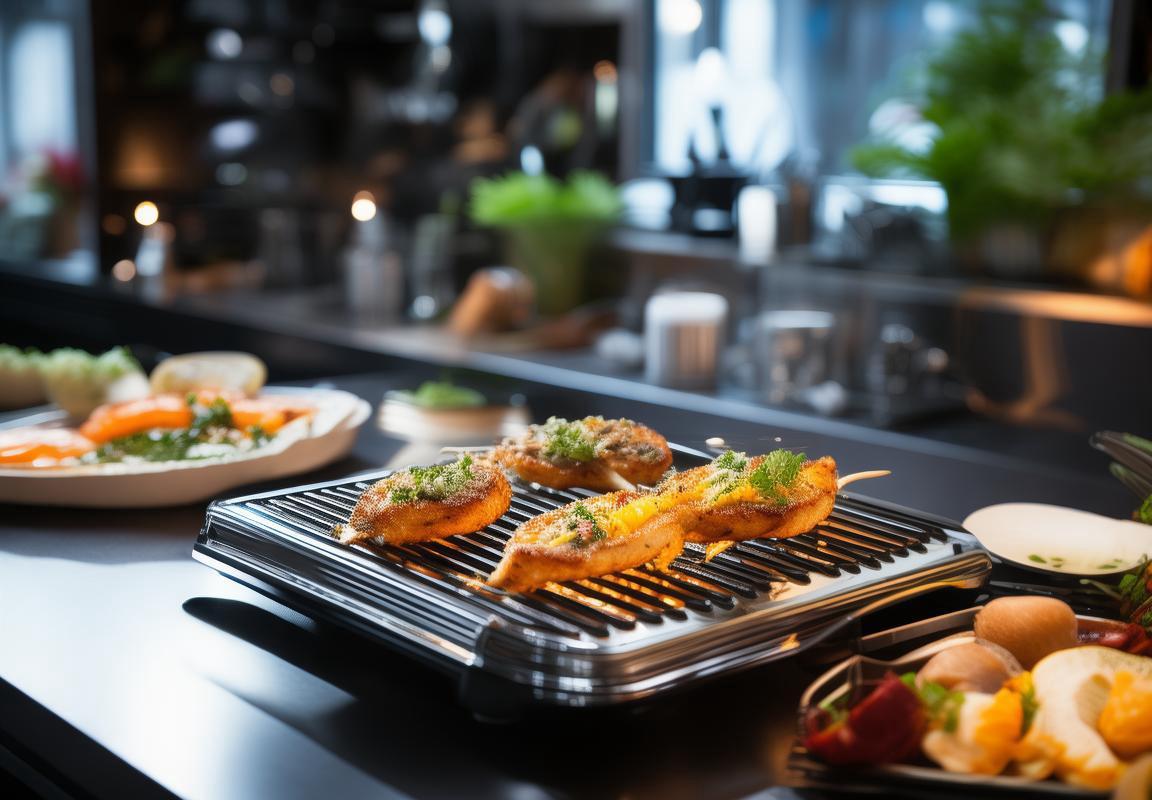
Technological Innovations: How Are Vendors Staying Ahead?
In the competitive landscape of the contact grill market, vendors are constantly seeking to innovate and stay ahead of the curve. Here’s a look at some of the key technological advancements shaping the industry:
Grill Surface MaterialsThe evolution of grill surface materials has been a significant factor in enhancing the performance and longevity of contact grills. Vendors have shifted from traditional metals like stainless steel to advanced materials such as ceramic and non-stick coatings. These materials not only improve heat distribution but also reduce the need for additional fats or oils, making grilling healthier and easier to clean.
Smart Features IntegrationThe integration of smart features into contact grills is a trend that’s gaining traction. Vendors are now offering models with built-in temperature sensors, digital displays, and even Wi-Fi connectivity. These features allow users to monitor and control the grill remotely, ensuring perfect cooking temperatures and times, regardless of their location.
Safety and Safety FeaturesSafety has always been a priority in the kitchen, and contact grill vendors are no exception. New safety features include automatic shut-off mechanisms that activate when the grill reaches unsafe temperatures or when left unattended for an extended period. Some models also come with child safety locks and non-slip bases to prevent accidents.
Energy EfficiencyWith environmental concerns on the rise, vendors are focusing on energy efficiency. Modern contact grills are designed to heat up quickly and maintain consistent temperatures, reducing energy consumption. Some models even include energy-saving modes that automatically lower the heat when not in use, contributing to a greener footprint.
Ergonomic DesignImproving the user experience is a key focus for contact grill vendors. Ergonomic designs include easy-to-use controls, lightweight materials, and compact sizes that make grilling more accessible and convenient. Features like removable drip trays and foldable legs for easy storage add to the convenience, making these grills a staple in many kitchens.
Customizable Cooking OptionsTo cater to diverse consumer preferences, vendors are offering contact grills with customizable cooking options. This includes adjustable heat settings, reversible grill plates, and even plates with textured surfaces for grilling, searing, or even creating grill marks. These innovations allow users to experiment with different cooking techniques and recipes.
Sustainability InitiativesIn line with global sustainability goals, contact grill vendors are exploring eco-friendly materials and manufacturing processes. This includes the use of recycled materials, reducing packaging waste, and ensuring that products are recyclable at the end of their life cycle. These initiatives not only appeal to environmentally conscious consumers but also help vendors maintain a positive brand image.
Interactive Cooking GuidesSome vendors are taking technology a step further by integrating interactive cooking guides into their contact grills. These guides can be accessed via a smartphone app or directly on the grill’s digital display. They offer step-by-step instructions, recipe ideas, and even suggest the best heat settings for various types of food, making grilling easier and more enjoyable for beginners and seasoned chefs alike.
Health and Wellness FocusAs health and wellness trends continue to grow, contact grill vendors are emphasizing the health benefits of their products. Features like adjustable heat settings that allow for grilling at lower temperatures to minimize charring and the use of non-stick surfaces that reduce the need for excessive fats are all part of a broader strategy to appeal to health-conscious consumers.
The contact grill industry is a dynamic field, with vendors continuously pushing the boundaries of what’s possible. By focusing on these technological innovations, they’re not only enhancing the cooking experience but also addressing the evolving needs and preferences of consumers worldwide.
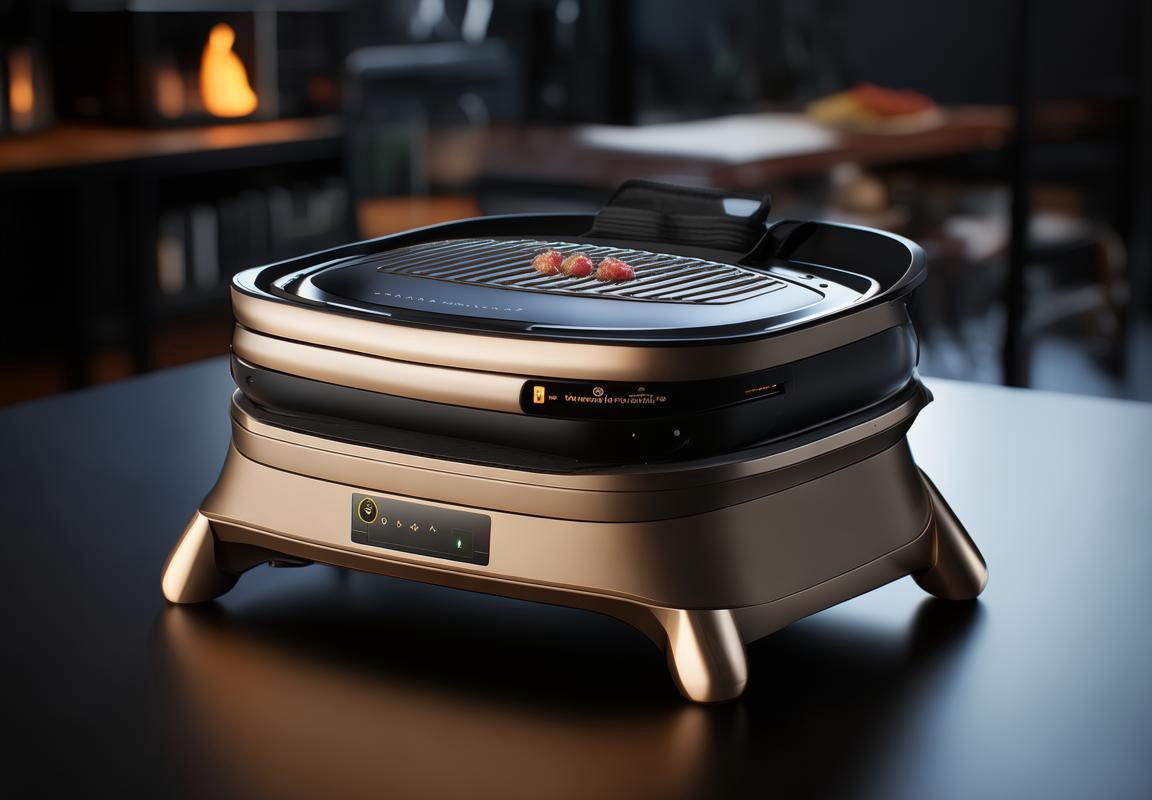
Distribution Channels: Strategies Used by Contact Grill Vendors
In the competitive landscape of contact grill vendors, strategies for distribution channels are crucial for reaching and retaining customers. Here’s a closer look at how these vendors are navigating the market:
Vendors have increasingly embraced e-commerce platforms as a cornerstone of their distribution strategy. Online marketplaces like Amazon and eBay offer vast reach and convenience for consumers, allowing them to browse and purchase contact grills from the comfort of their homes. This shift has been particularly pronounced in North America and Europe, where digital shopping habits are well-established.
Specialty kitchen stores and department stores have long been a staple for contact grill sales, providing a physical space for customers to see, touch, and even try out the products before making a purchase. Vendors have leveraged these retail locations to showcase their grills, often through strategic partnerships and exclusive product lines that can’t be found elsewhere.
Direct-to-consumer (DTC) initiatives are on the rise, with some vendors opting to sell their products exclusively through their own websites. This approach allows for greater control over the customer experience and the ability to gather valuable data on purchasing habits. By cutting out the middleman, vendors can also offer competitive pricing and direct support to customers.
In Europe, especially in countries like Germany and the UK, a significant portion of contact grill sales are facilitated through home improvement and DIY stores. These channels are particularly appealing to consumers looking to update their outdoor spaces with high-quality appliances that can enhance their cooking experiences.
Wholesale partnerships with catering companies, hotels, and restaurants have also become a key distribution strategy for contact grill vendors. These partnerships often lead to bulk sales and can provide vendors with a steady stream of revenue. It’s not uncommon for these vendors to offer tailored solutions for commercial kitchens, which can include larger, more durable models designed for professional use.
In the USA, contact grill vendors have begun to tap into the health and wellness market, distributing their products through gyms, sports nutrition stores, and even organic food markets. This targeted approach is effective for reaching consumers who are interested in healthy cooking methods and are more likely to invest in appliances that align with their lifestyle choices.
Trade shows and culinary events have emerged as valuable opportunities for vendors to distribute their contact grills. By showcasing their products in a dynamic and interactive setting, vendors can engage with both consumers and trade professionals. This strategy not only drives sales but also fosters brand recognition and loyalty.
Social media has become a powerful distribution tool, with vendors using platforms like Instagram and YouTube to reach consumers through influencer partnerships and engaging content. These digital channels allow vendors to demonstrate the versatility and benefits of their contact grills, often in the context of popular culinary trends and recipes.
In response to the global pandemic, contact grill vendors have accelerated their focus on contactless delivery options. This shift has been particularly important in Europe, where health and safety concerns have heightened the demand for touch-free shopping experiences. Vendors have partnered with delivery services and implemented curbside pick-up options to accommodate these preferences.
The rise of subscription box services has opened up new avenues for contact grill vendors. These boxes, which often include a contact grill along with accessories and cooking tips, have become a way for vendors to introduce their products to new customers. This model also provides a recurring revenue stream, as customers are encouraged to renew their subscriptions.
Lastly, many contact grill vendors are exploring the possibility of mobile sales units. These units can travel to different neighborhoods, community events, and pop-up markets, offering a unique and immediate shopping experience. This approach is particularly effective for reaching consumers in areas where traditional retail options are limited.
In summary, the strategies employed by contact grill vendors in distributing their products are diverse and evolving. By adapting to changing consumer preferences, leveraging digital platforms, and exploring innovative channels, these vendors are positioned to meet the growing demand for high-quality, convenient cooking appliances.
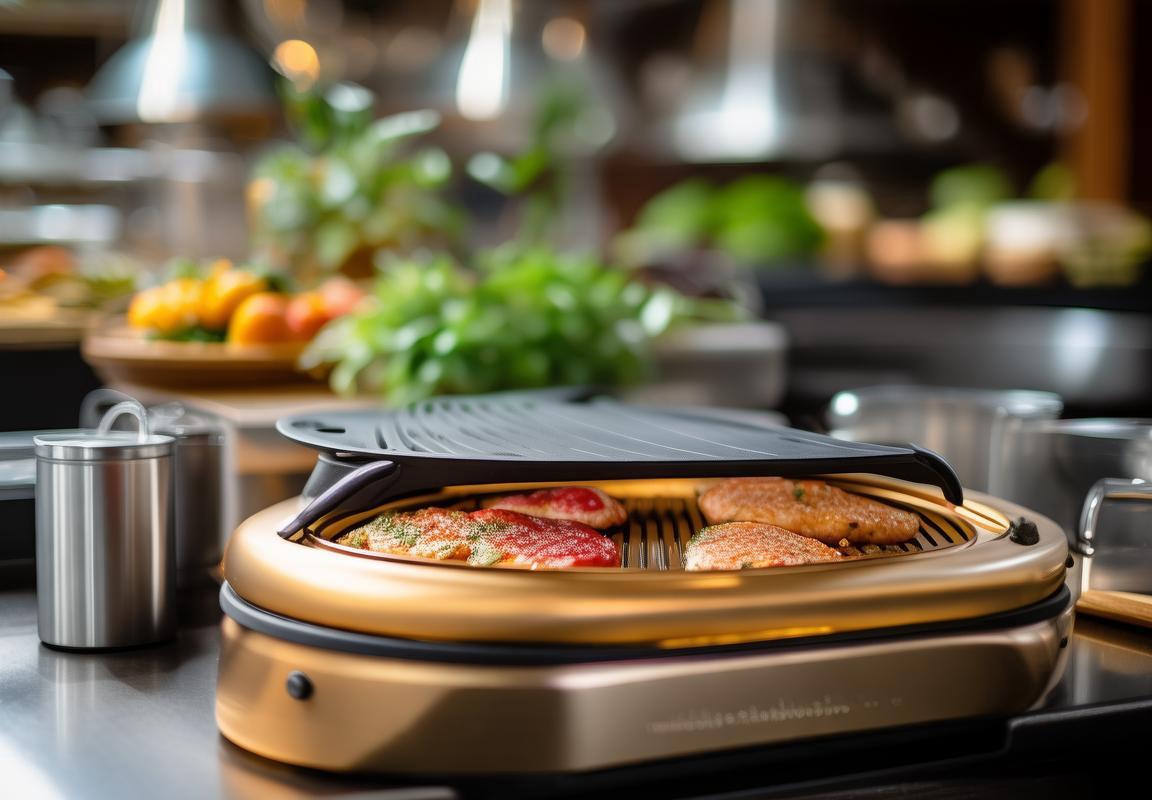
Challenges and Opportunities: The Contact Grill Landscape
In the dynamic landscape of the contact grill market, vendors are continuously faced with both challenges and opportunities. Understanding these factors is crucial for staying competitive and capitalizing on emerging trends.
The market for contact grills is experiencing significant growth, driven by consumer demand for healthier cooking methods that offer convenience and taste. However, several challenges are reshaping the industry.
Consumer health consciousness has led to a surge in interest in contact grills, which are known for their ability to cook with minimal oil, thus reducing fat content. This trend has prompted vendors to innovate and improve their product offerings to cater to this demand.
One challenge is the need for vendors to differentiate their products in a crowded market. With numerous brands competing for consumer attention, it’s essential to stand out. Some vendors are doing this by focusing on design, while others are emphasizing features like adjustable temperature settings or non-stick surfaces.
Another challenge lies in the price sensitivity of consumers. While the health benefits of contact grills are appealing, the initial cost can be a deterrent for some buyers. Vendors must find a balance between offering value and maintaining profitability.
Opportunities in the contact grill market are abundant, particularly as technology continues to evolve. Smart grills that connect to mobile devices, allowing users to monitor and control cooking processes remotely, are becoming increasingly popular. These advancements not only enhance user experience but also open up new marketing avenues.
Furthermore, the rise of eco-friendly and sustainable products has created an opportunity for vendors to appeal to environmentally conscious consumers. Using recyclable materials and reducing energy consumption are strategies that can set a brand apart.
In terms of distribution channels, contact grill vendors are diversifying to reach a wider audience. Online sales have surged, with e-commerce platforms becoming a key player in the market. This shift allows vendors to reach customers directly and provides a convenient shopping experience.
However, the importance of traditional retail cannot be overlooked. Local markets, department stores, and specialty kitchen shops remain significant sales outlets. Vendors must therefore develop strategies that appeal to both online and offline consumers.
The contact grill landscape also involves navigating regulatory changes. Safety standards and certifications are crucial for vendors to ensure compliance and build consumer trust. Staying ahead means being proactive in adhering to these regulations and communicating them to customers.
Lastly, the globalization of the market presents both challenges and opportunities. As contact grills gain popularity worldwide, vendors must consider cultural differences and adapt their marketing strategies accordingly. This includes understanding local preferences, regulations, and market conditions.
In summary, the contact grill industry is ripe with challenges that require innovative solutions, but it also offers a wealth of opportunities for growth. By focusing on health trends, technological advancements, and strategic distribution, vendors can position themselves to thrive in the dynamic contact grill landscape.

Conclusion: Future Prospects for Contact Grill Vendors in the USA and Europe
The contact grill market in the USA and Europe is poised for significant growth, with vendors continuously adapting and evolving their strategies to cater to consumer demands. Here’s a look at the challenges and opportunities that define the current landscape.
Innovation in materials and design has been a key driver for contact grill vendors, as consumers seek durable and aesthetically pleasing appliances. Vendors are investing in high-quality stainless steel and non-stick coatings that not only enhance the performance of the grill but also appeal to health-conscious consumers looking for easy-to-clean surfaces.
The integration of smart technology is another trend reshaping the contact grill market. Vendors are incorporating features such as Bluetooth connectivity, temperature control, and automatic shut-off to provide a safer and more convenient grilling experience. This tech-savvy approach is attracting tech enthusiasts and busy home cooks alike.
E-commerce has become a significant distribution channel for contact grill vendors. Online sales platforms offer a vast range of options and competitive pricing, making it easier for consumers to compare products and make informed purchases. However, this has also led to increased competition, with vendors needing to stand out through product differentiation and customer service.
Sustainability is a growing concern for both manufacturers and consumers. Vendors are responding by exploring eco-friendly materials and packaging, as well as developing energy-efficient appliances. This commitment to sustainability not only aligns with consumer values but can also be a differentiating factor in a crowded market.
Health and wellness remain at the forefront of consumer preferences, driving the demand for contact grills that offer healthier cooking options. Vendors are focusing on low-fat and low-cholesterol recipes, as well as grill models that can handle a variety of cooking techniques, from searing to grilling to smoking.
Safety is a critical factor in the contact grill market. Vendors are investing in safety features such as anti-lock mechanisms, cool-touch handles, and automatic temperature control to prevent accidents and burns. These features are not only important for compliance with safety standards but also for building consumer trust.
The contact grill market is also seeing an increase in cross-border shopping, with consumers seeking out the latest models from international brands. This trend is driving vendors to expand their product lines and invest in global marketing strategies to capture this international audience.
Despite these opportunities, contact grill vendors face several challenges. One of the most significant is the need to keep up with rapidly changing consumer preferences. Trends in cooking and technology are evolving quickly, and vendors must be agile in their product development and marketing to stay relevant.
Another challenge is the high cost of entry into the market. The production of a high-quality contact grill requires significant investment in materials, manufacturing, and quality control. Vendors must find a balance between offering premium features and maintaining competitive pricing.
Regulatory compliance is another hurdle. Safety standards and certifications vary by country, and vendors must navigate these differences to ensure their products meet local requirements. This can be a complex and time-consuming process.
In terms of opportunities, the growing interest in outdoor cooking and social grilling is a boon for contact grill vendors. As people spend more time at home and seek ways to entertain guests, the demand for versatile and efficient grilling appliances is on the rise. Vendors that can offer a wide range of products tailored to different cooking styles and preferences are well-positioned to capitalize on this trend.
The rise of health-conscious consumers is also a significant opportunity. As people become more aware of the health risks associated with traditional cooking methods like frying, the appeal of contact grilling, which offers healthier cooking options, continues to grow.
In conclusion, the contact grill market in the USA and Europe is marked by a dynamic interplay of challenges and opportunities. Vendors that can innovate, adapt to consumer preferences, and navigate the complexities of global markets are well on their way to securing a strong position in this burgeoning industry. The future looks promising for those who can maintain a balance between technological advancement, consumer satisfaction, and sustainable practices.